My uncle, Tom, ready to canoe the Kinnickinnic River.
The Kinnickinnic River is a long-time favorite paddling route. My uncle, Tom, and I have paddled the Kinni several times in the past, but it's been a few years for me. Tom is a great paddling partner and guide. He's a Minnesota Master Naturalist, with far more knowledge of the flora and fauna than I. Tom's always been a very active outdoorsman; he has bicycled across the country, mountain biked large sections of the Continental Divide, canoed the arctic, and knows tons of great day and weekend trips near the Minneapolis-St. Paul area. Some of my earliest outdoor adventures were paddling with my dad and Tom: the Flambeau, St. Croix, Upper Iowa River, and the Boundary Waters were early favorites. These days, Tom is retired and spends a great deal of his time on trail building and prairie restoration volunteer projects.
A little background on the Kinnickinnic River: The Kinni stretches 22 miles and winds through northwestern Wisconsin before emptying into the St. Croix River. With a fairly consistent depth and an almost endless supply of twists, turns, and Class 1 riffles, the Kinni is a perfect paddle destination for people who want a scenic route that isn't too challenging. The river is banked with steep walls, high bluffs, and hardwood forest. The Kinni is a trout stream and the valley is full of wildlife. There are also numerous spots along the Kinni to stop for lunch and explore the valley.
Tom's vintage Sierra Designs rucksack.
We typically start our paddle at Glen Park, below the damn, in River Falls, Wisconsin. Tom, ever the knowledgable guide, made sure we stopped at the Best Made Cookie Company's factory store to fuel up for our paddle down the river, and I packed some survival provisions in the dry bag (just in case of a cookie emergency). I was coveting his sweet vintage Sierra Designs rucksack.
During our paddle last weekend, we saw an ark-load of wildlife, including several osprey, eagles, blue heron, deer, amongst other critters. Being early in the season, there was quite a bit of deadfall on the river, including this downed tree which made a nasty sweeper. After some work with the pole saw and a left boot full of ice cold water, we'd cut out a safe channel.
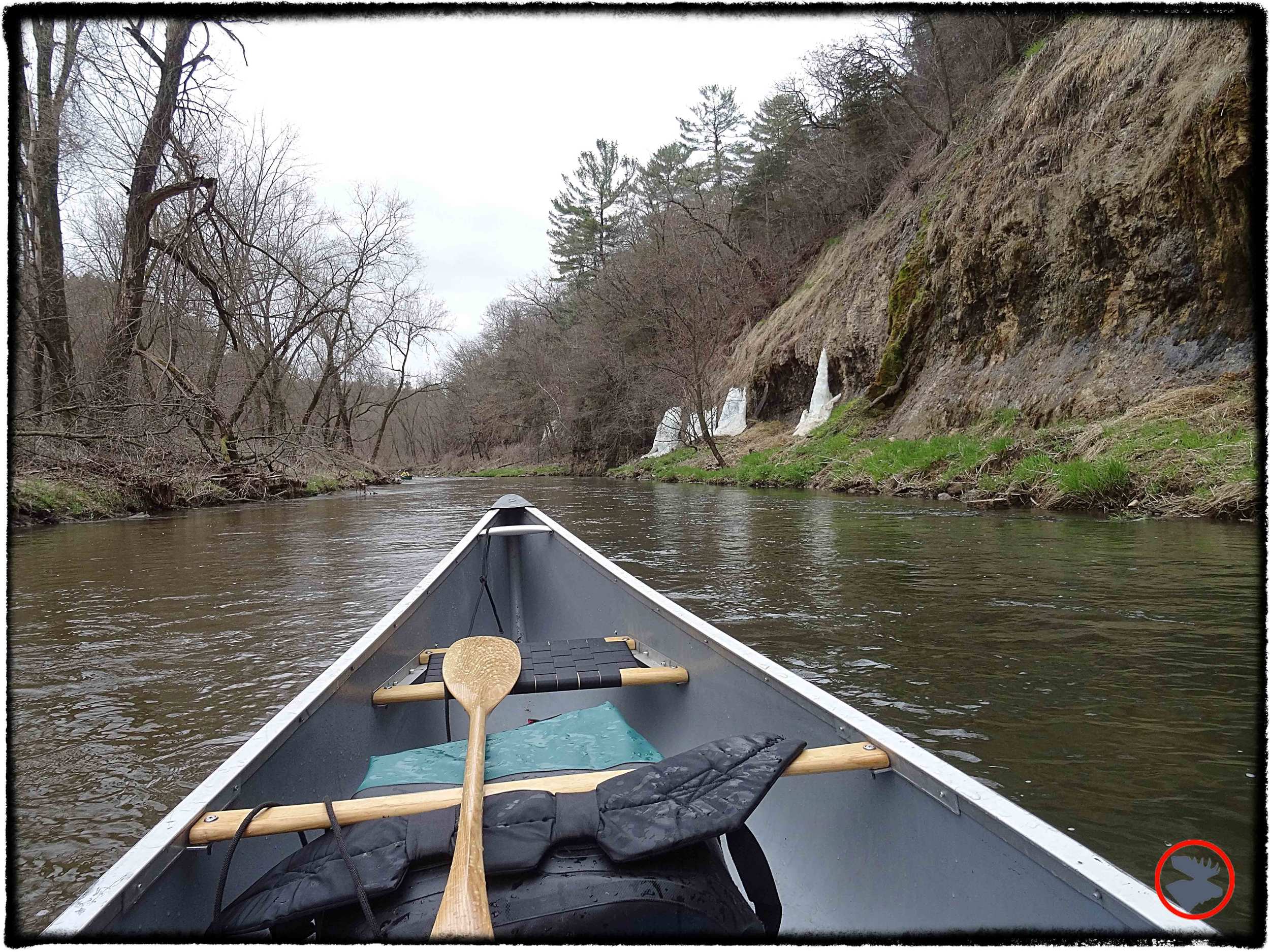
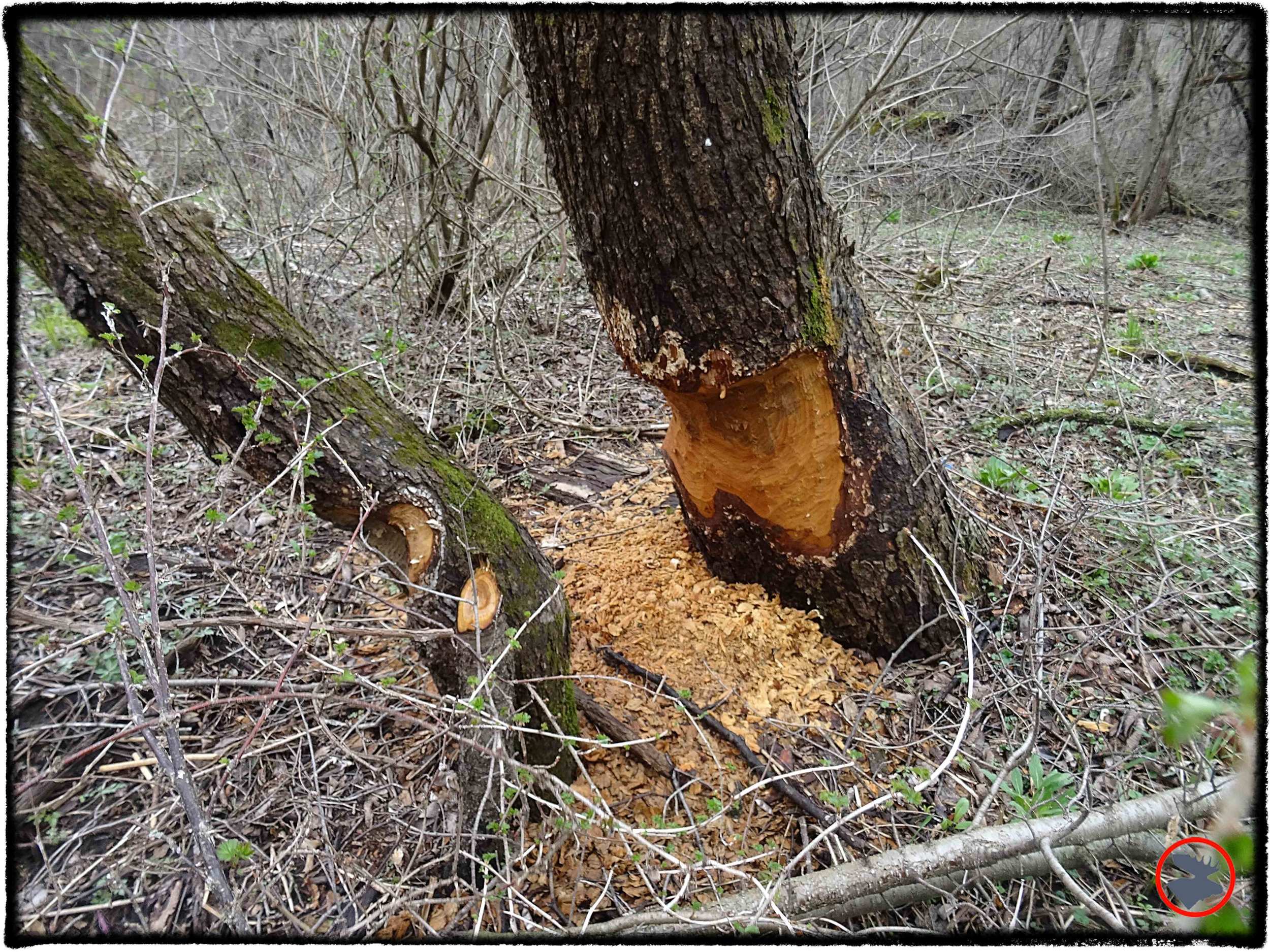
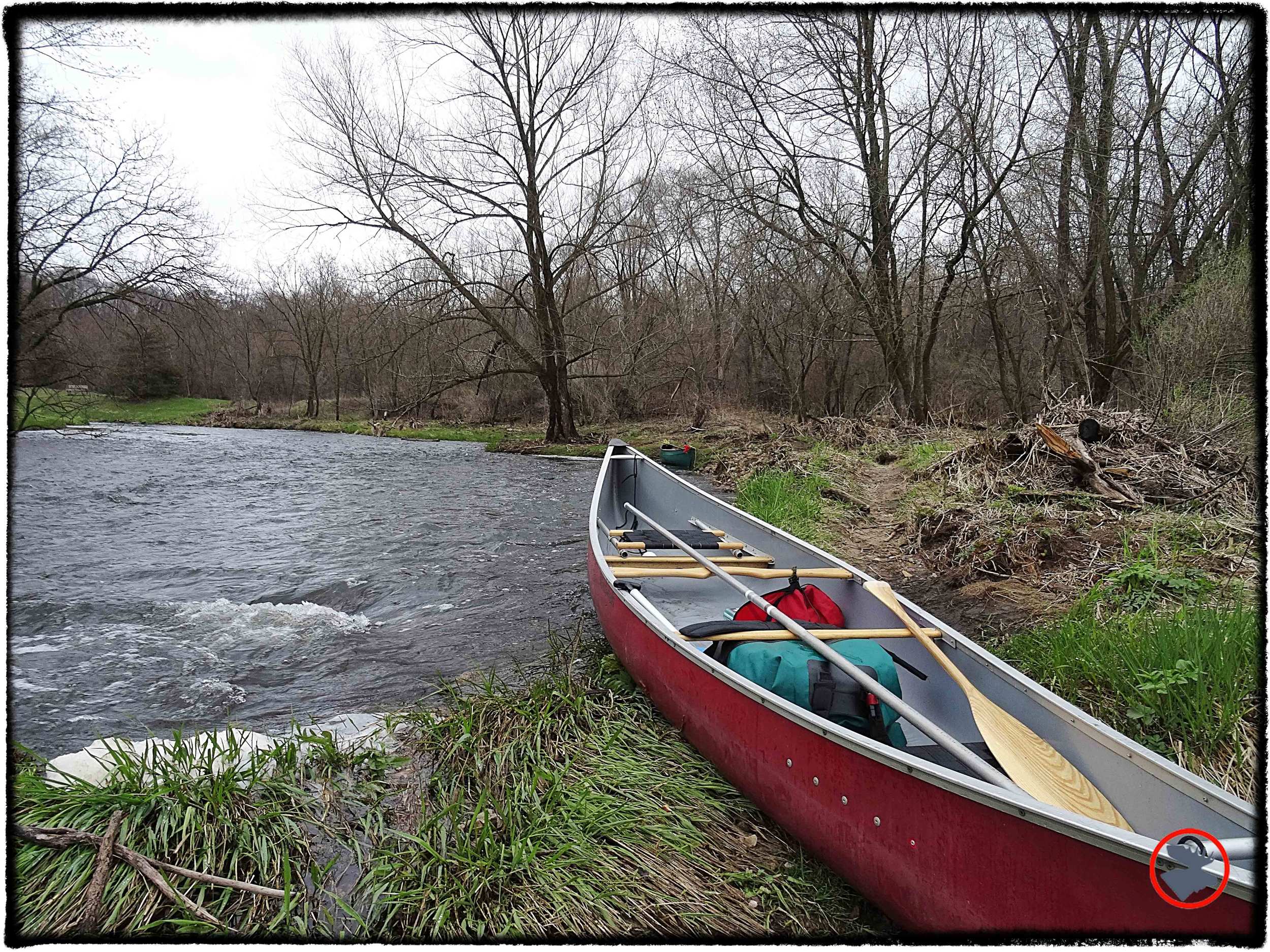
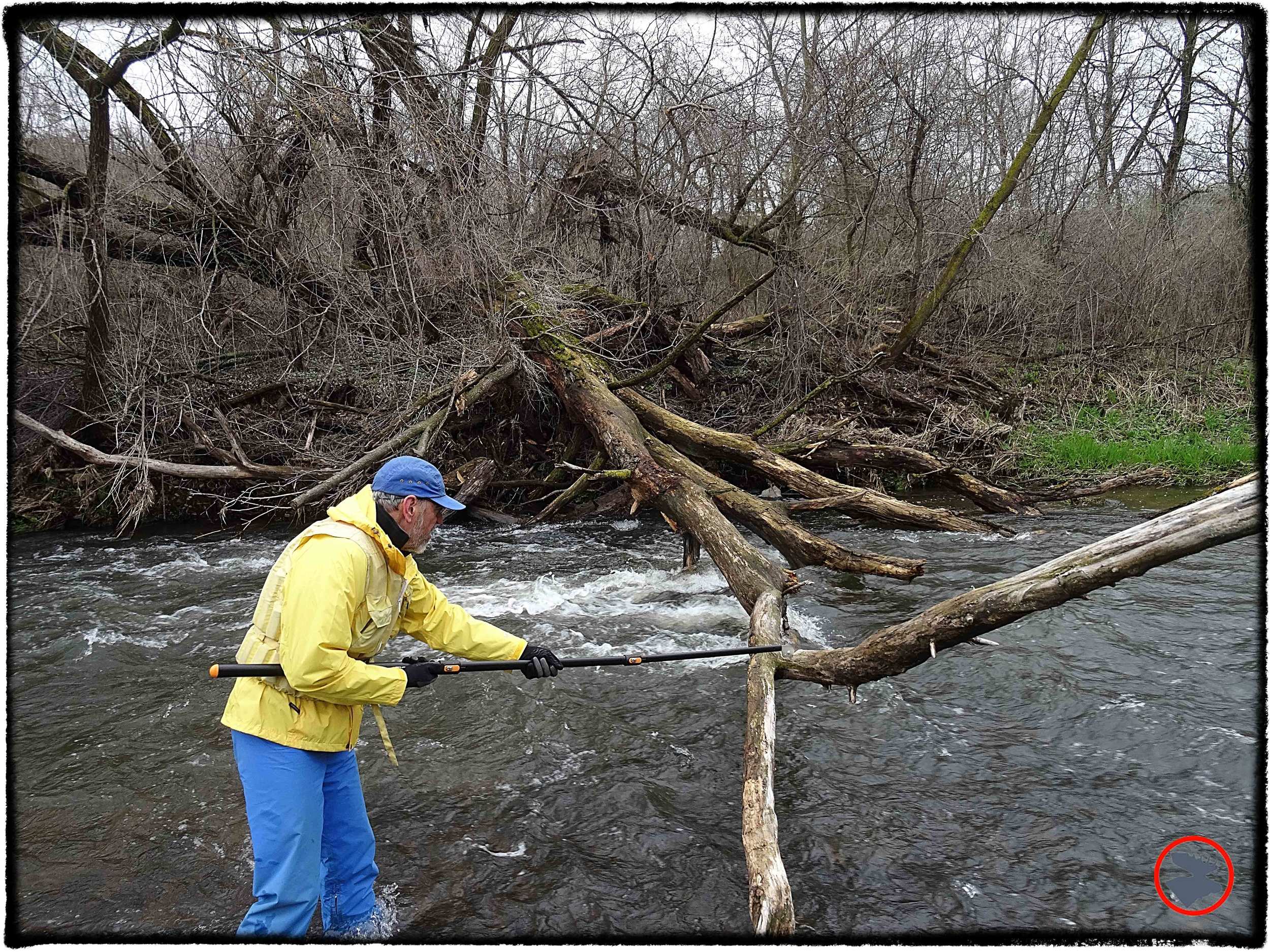
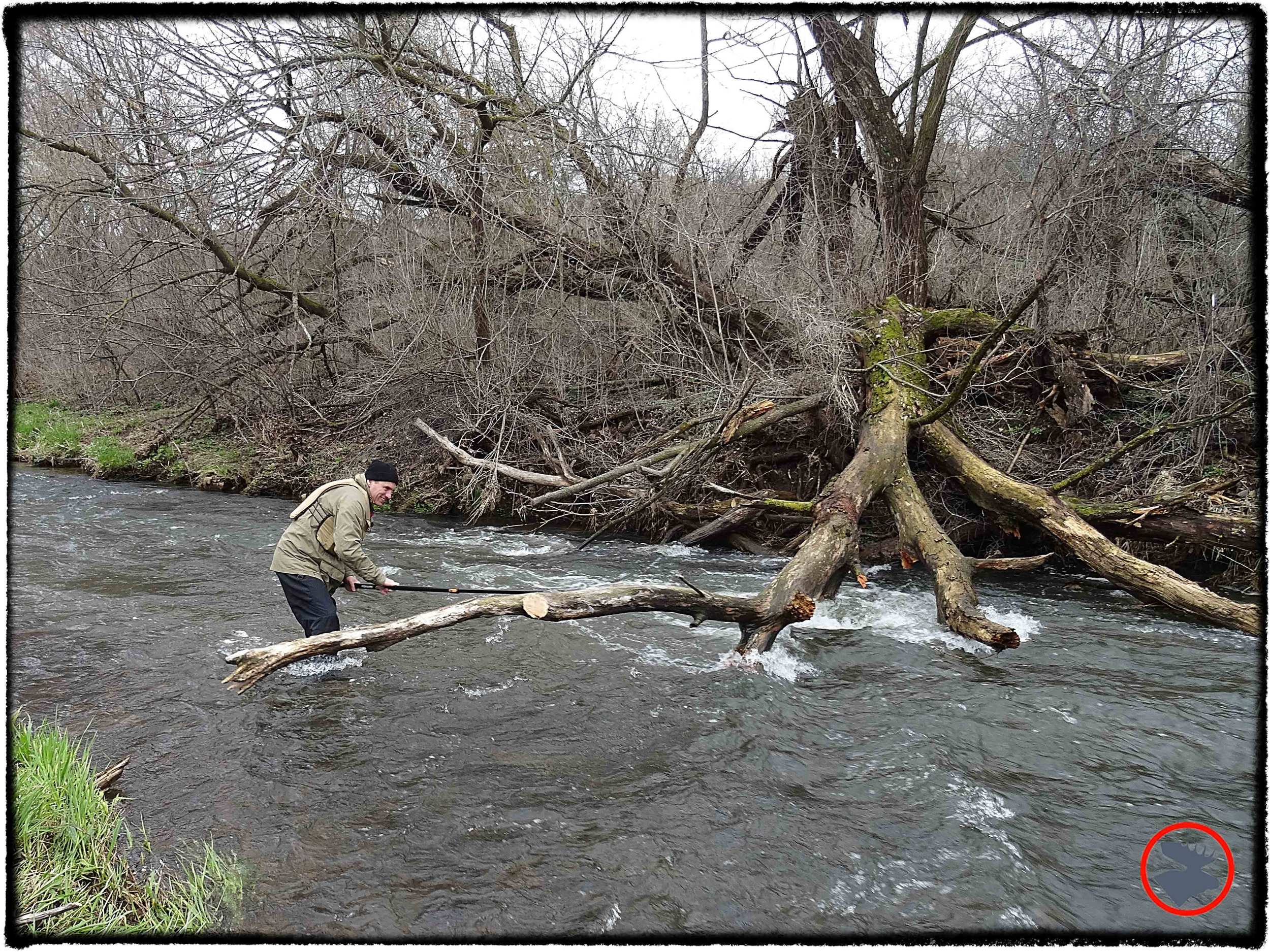
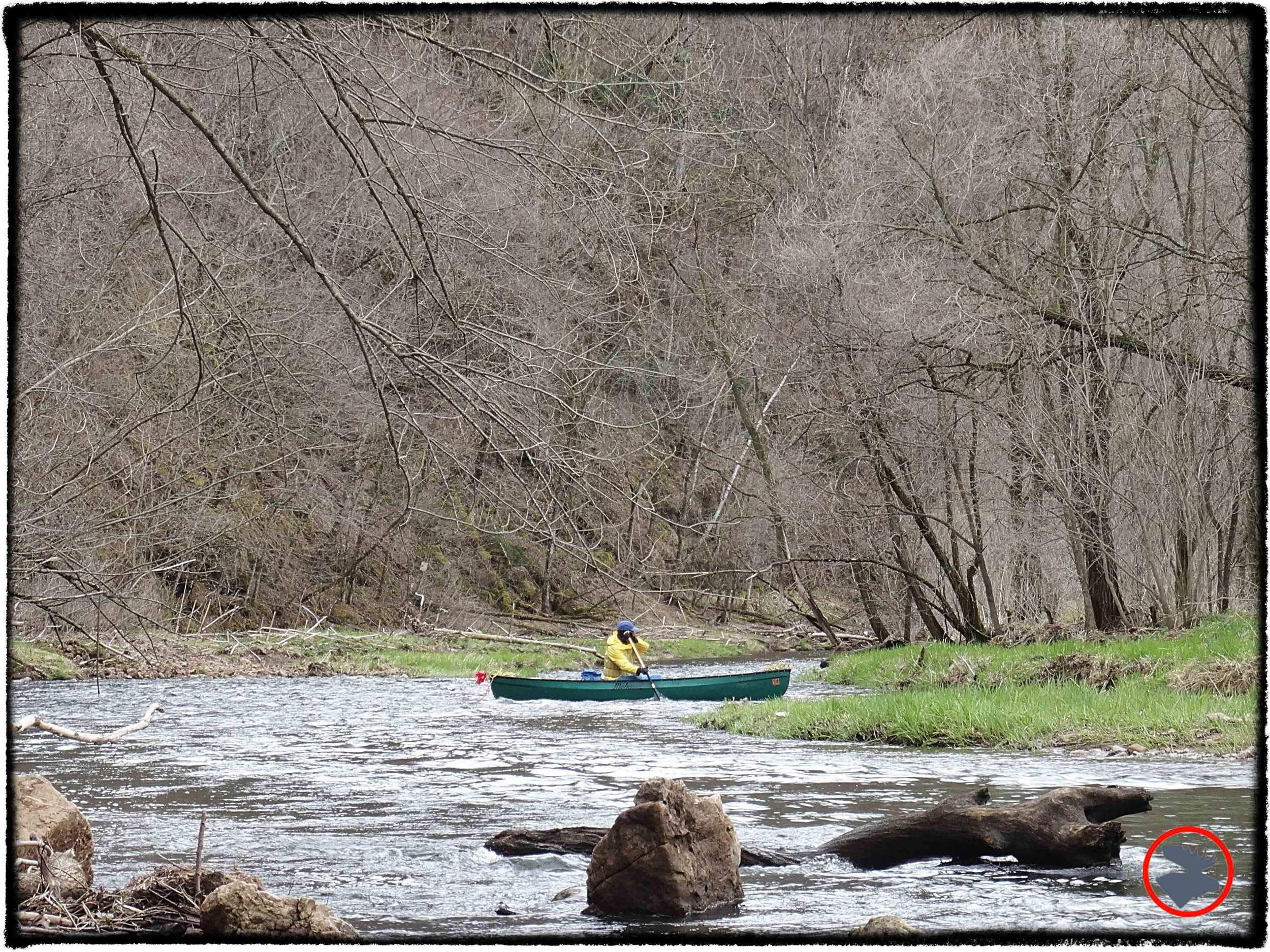
Tom was paddling a solo Royalex creek boat by Mohawk, and I was in my 16' Royalex prospector type canoe from Wenonah. My dad bought the canoe used about 30 years ago, and it has seen tons of use. At this point, the hull is not pretty. That Royalex is tough stuff though! Too bad they've stopped making it.
I'm working on developing my canoe poling skills, and the Kinni, with it's rocky bottom and winding route, was perfect for practicing this old time skill, which seems to have died out in the Midwest. I was using a two-piece aluminum pole from the Hayden CanoePole Company, but wished I would've brought one of my hand-cut, shoeless wooden poles. There was so much wildlife, it seemed a shame to scare them off with the metallic clanking on the bottom. The cheap rubber gloves I brought worked well, but the wood would've been much warmer.
I've got a ways to go, but all in all, the poling was a success. I stayed high and dry, practiced side-slips, backing into eddies, snubbing and holding my position going through rapids, and worked my way back upstream through a few rapids. I did catch myself several times performing the much demonized cross-body snub, which in big water is likely to send you hurtling from the boat, but in the calm stretches of the Kinni, I was able to get away with it. This was the most I'd ever tried to climb up a river, during which, I also caught myself planting too close to my body with the pole nearly vertical, and then trying to haul away on it, instead of planting it further behind with a shallow angle. I don't know, something about the sensation of feeling myself sliding backward down a rapid while standing in a tippy canoe led to frantic, less then ideal, jabs with the pole.
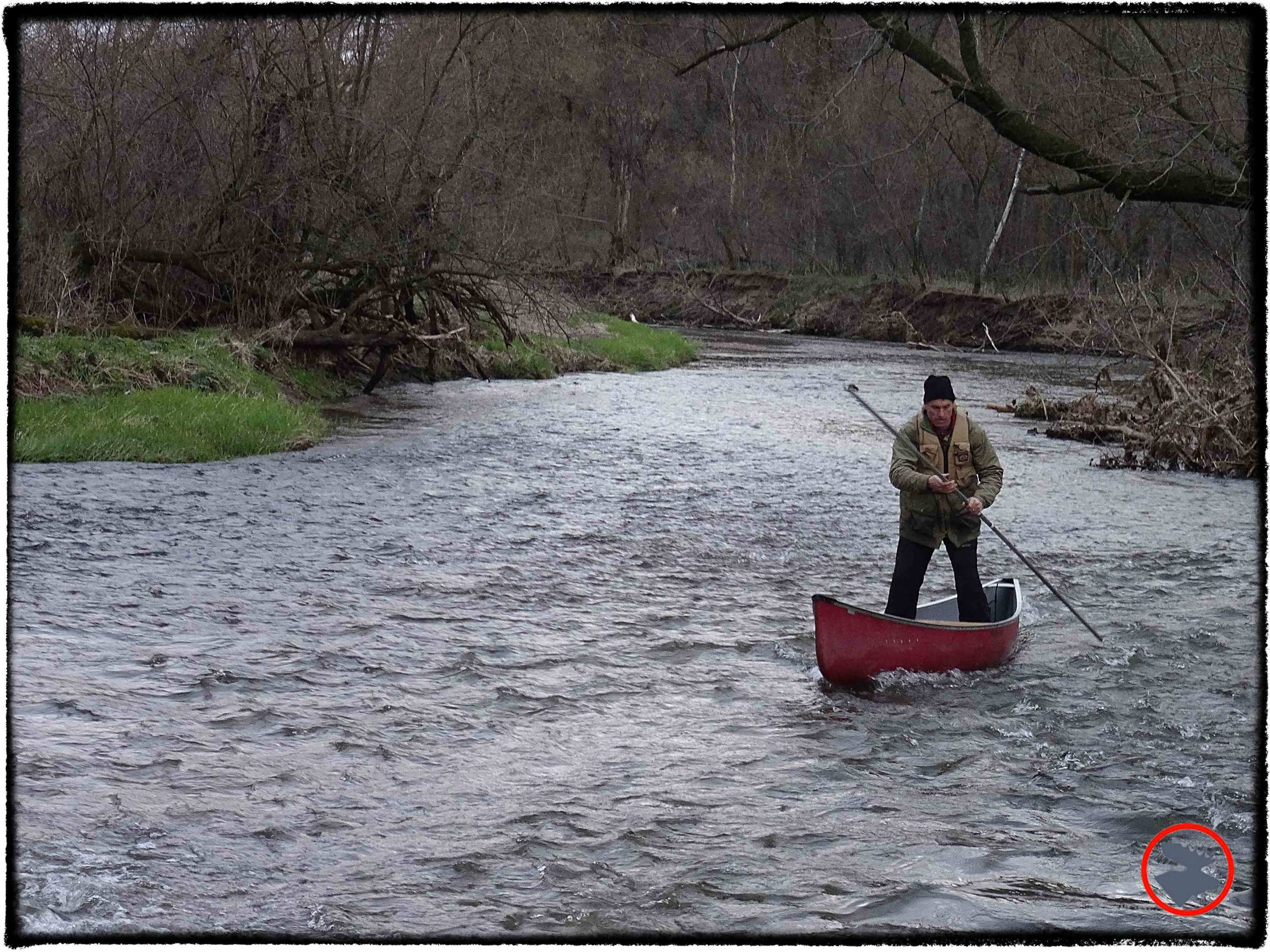

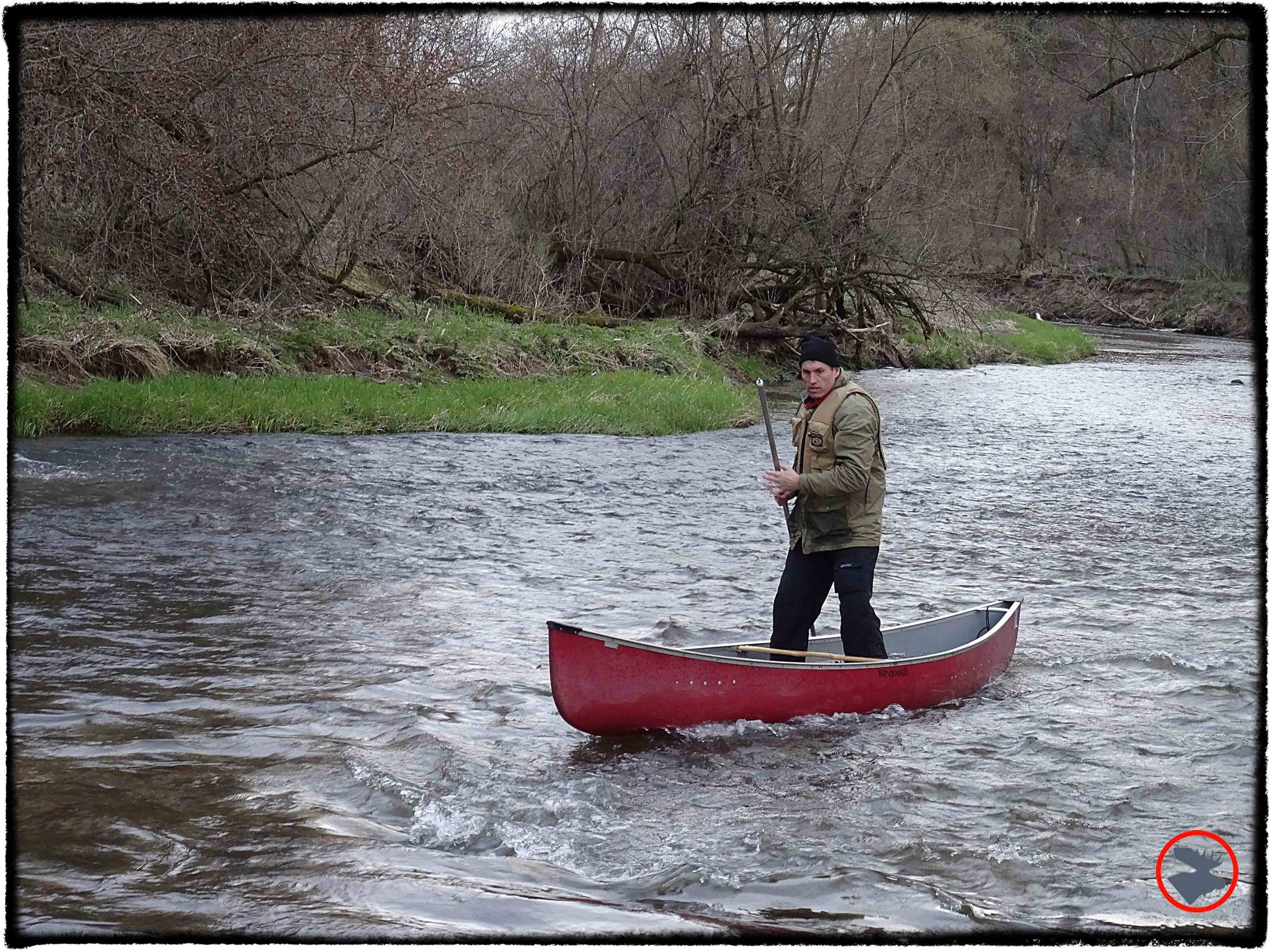

Still, I can't wait to get back out on the water with the pole, especially during my upcoming trip down the Machias River in Maine! In Maine, New Brunswick, and some other areas of the Northeast, poling is a highly regarded skill, and it's amazing to see the boat control of a skilled practitioner. You get an entirely different view while standing, and you can get a great workout heading upstream against the current. Stand-up paddleboarding has grown wildly over the past few years, and I can see why, but I think many people would be better served by grabbing a pole and jumping in a canoe--a far more versatile craft.
It's not just the canoe poling that's a favorite in the northeast; Mainers are also crazy about standing up and paddling their canoes--and often advocate towering paddles that would make a typical Boundary Waters paddler recoil in horror. The classic "Maine Guide" paddle has a long taper grip, allowing you to use the standard top grip while standing, and then slide your hand down the side of the grip (so your knuckles are parallel to the paddle instead of perpendicular) to effectively shorten the paddle while seated. I find this unique grip easier on the wrist during extended periods of using the "J" or "Canadian" strokes.
If you're looking for a gorgeous paddle route that isn't too intimidating, the Kinnickinnic River is perfect. Pack a lunch, a paddle (and a pole!), and enjoy the day outdoors on the Kinni!





Dr. Richard Kark paddled more than 300 of Wisconsin’s rivers and streams! He took copious notes and compiled them in a book that you can access at no cost. Before your next WI paddle, be sure to check out this wealth of information!